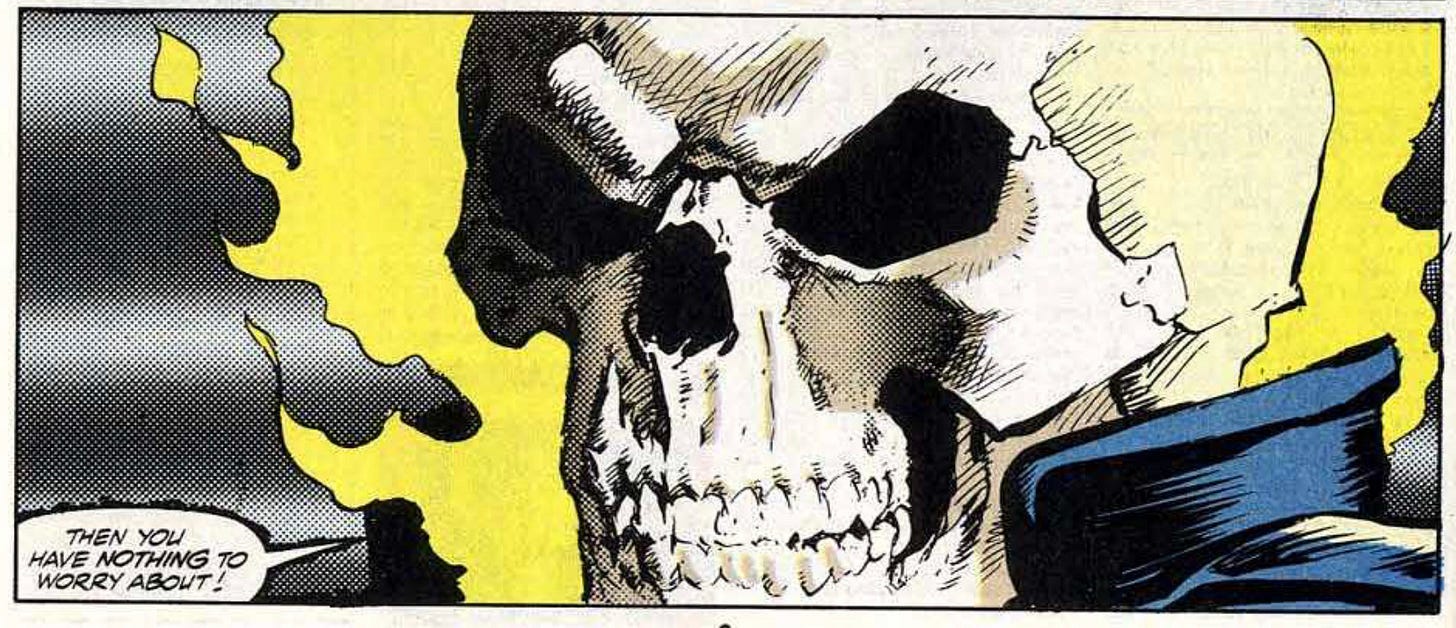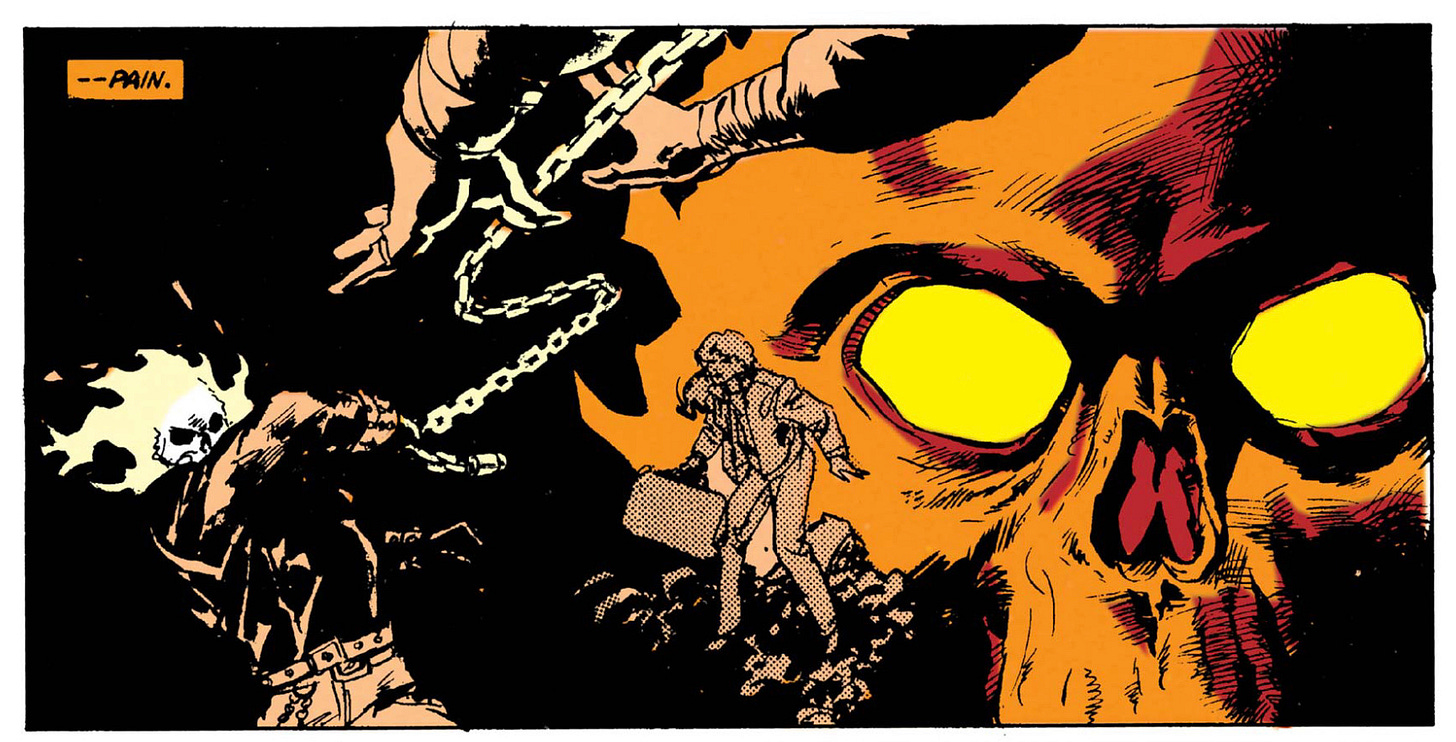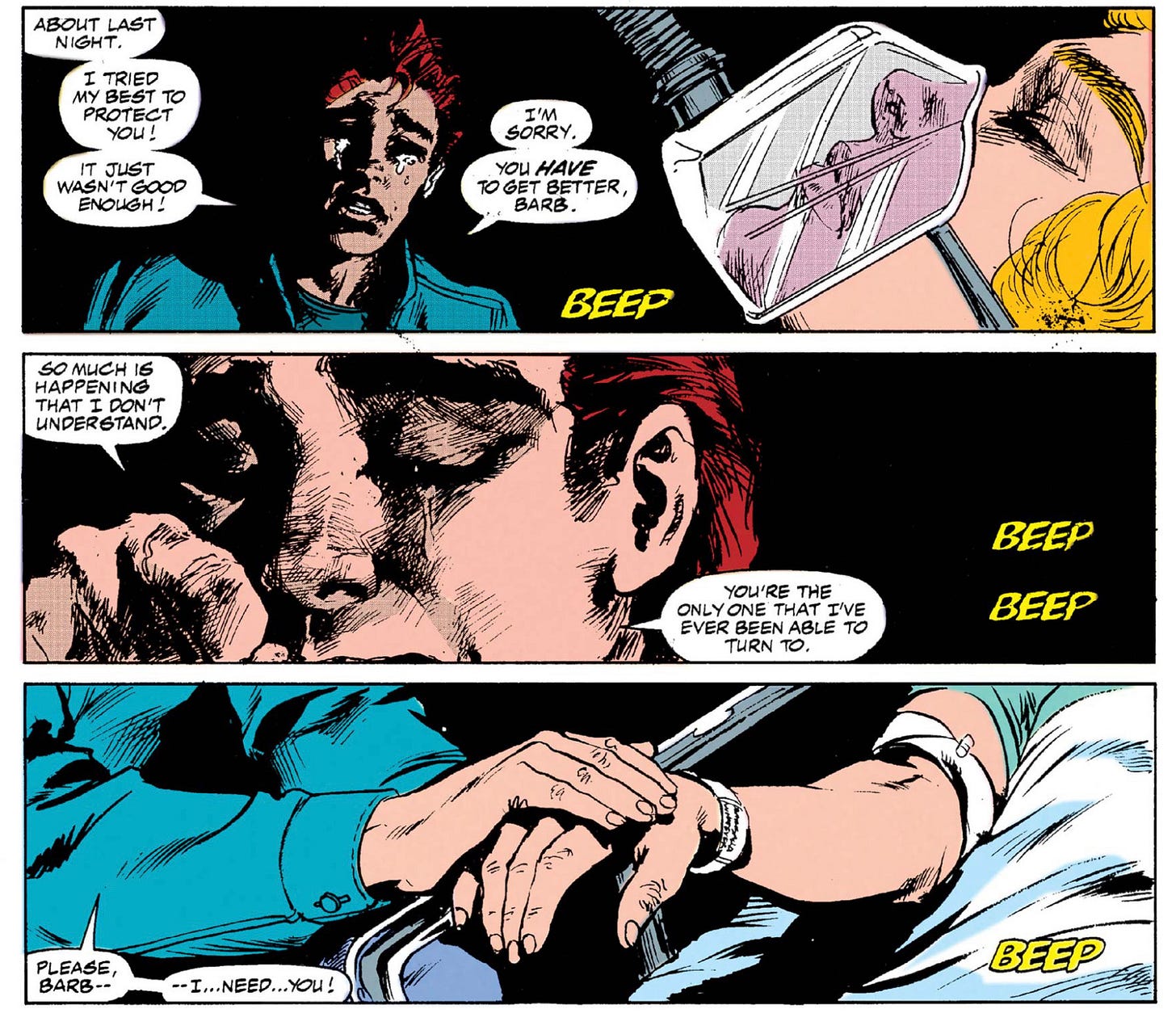It’s been a long, exhausting two months. Writing has been almost impossible, having to pick up a lot of slack for my wife who ended up with a broken hand following a car accident. Mix in a variety of illnesses for the young child that have made their way through the household, an exhaustive and ongoing job search full of bitter disappointments, and there’s been no time for writing.
I miss it—particularly the No Context Comics weekly feature. I had/have a few other regulars but I haven’t even been able to even read any new comics let alone write about anything. I’ve been trying to plug away at a couple external gigs — Have you seen me on The Beat? I still make a few bucks from CBR once-in-a-while, and throw out a few recap scripts a month for Plot Armor Comics.
If there’s anyone out there in search of a writer…or! A nonprofit professional, why don’t you reach out already?
I haven’t had much time to write or read much but I’ve been pursuing my 2023 resolution to become a Ghost Rider Guy with gusto. I have made my way through the first volume, which is mostly weird and not great and am in the early stages of the Danny Ketch 90s reboot. So, I figured why not talk about Ghost Rider?
WHAT DOES IT TAKE?
Danny Ketch is essentially another Spider-Man riff with a dark edge. He finds himself thrust into a role of defender of the innocent after tragedy strikes his family. In his case, though, there is no moral parable about power and responsibility. Danny’s beloved sister and best friend is shot and hospitalized in a random act of violence after being caught in the wrong place at the wrong time.
In a desperate attempt to save her life, Danny inadvertently summons the Spirit of Vengeance from an abandoned motorcycle he just happened to be hiding behind.
The Ghost Rider is unleashed. It metes violence upon the wicked, forcing criminals and hypocrites to face the full weight of their sins and misdeeds. Ghost Rider doesn’t kill, but in some ways, Danny finds what he does when the Rider takes over even worse. Ghost Rider damns the living to a waking Hell. He brutally assaults crooks and robbers.
Danny knows it’s not justice—Not in the way we understand it. It’s violence that the spirit revels in. Worse, Danny finds himself beginning to revel in it, too.
Like Johnny Blaze before him, Danny begins to balk at the transformation, feeling cursed by the Spirit clawing its way out. But unlike Johnny there is a clear moral and ethical struggle at play. Danny is a meek kid who fell in over his head. He did not summon a demon in a fit of hubris and selfishness. He tries to give up but begins to rely on the acts of vengeance as an outlet for his pain and sorrow over his sister’s hospitalization.
But the stakes are low at first. His sister may or may not recover, but being Ghost Rider gives him freedom. He wants to be normal, but he also wants the rush of Ghost Rider’s flaming fury.
Danny’s predicament is not so different from what you or I or anyone else feels about a bad habit. What’s one more drink at this party? It’s not hurting anyone. Why not bet one more time for the chance to win big? One more drag on the cigarette. The damage is already done.
We know that our actions are harming us. They are forcing us to let down those around us.
What does it take, then? To make a decision? To embrace the torrent we have been trying to hold back or take responsibility and finally move on?
What does it take?
Danny’s decision is made for him when a villain Ghost Rider fought on one of his first outings discovers the truth of Ketch’s dual life. His vengeance is simple: He pursues Danny from afar, killing every person Danny has even the slightest interaction with. It starts with his sister — killed in her hospital bed. Brutally. Violently.
Without meaning.
What does it take for Danny to make his decision? More darkness. More hate. Danny becomes consumed by Ghost Rider. The Spirit of Vengeance becomes his. Their hate and need for retribution align.
Danny’s tragedy is the slow motion tragedy of addiction tearing him further and further away from his friends and loved ones until they are caught up in it and pay the price. Danny has the choice to bury Ghost Rider—to leave the motorcycle that grants him the intoxicating power—but he enjoys the rush. The game that he thought he could handle overwhelms him.
Howard Mackie’s script is elevated by the distinctive and moody art from Javier Saltares, Mark Texeira, and Gregory Wright. Together they take the iconography of the flaming skull and motorcycle and elevate it to something truly haunting. In the first volume of the Blaze series, the art is inconsistent and leans into Ghost Rider more as a carnival sideshow. Here, he haunts the shadows. Heavy blacks abound and Texeira’s scratchy lines over Saltares’ dramatic pencils makes it feel like Danny might fall apart at any moment. This is a dark and gothic vision of New York, full of messy inks and screentone backgrounds that place Ghost Rider’s fiery head in stark contrast to his surroundings. He is not a silent predator of the night but a flashing siren warning of the coming vengeance and damnation.
Danny is damned upon the death of his sister. It is the moment where he surrenders to the growing urges within him. Unlike Johnny Blaze, whose origin is in a desperate deal with the devil to save the life of his step-father, Danny’s origin is far more complex and gradual, over the course of the first year of his title. The creators draw us into this violent world (almost comical in its body count) and ask us to consider—what would it take for you to break?
That was fun.
Thanks for reading my complete stream of conscience Ghost Rider thoughts. Let’s try doing this again more regularly.
Hopefully things will get more back to normal around here and writing won’t be nearly impossible for much longer. It’s been so bad I gave serious thought to starting a podcast where I force my non-comics-reading wife to read and talk about comics. I wrote notes and everything. Dark times.







